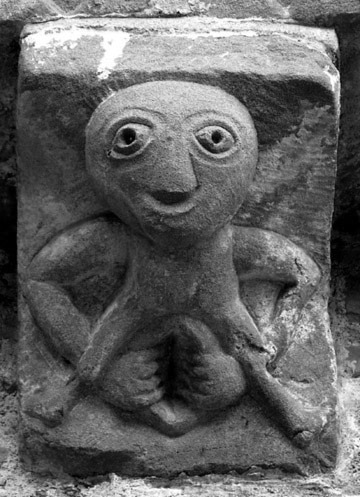Calmness and Strength in the Birthing Figure of the Sheela-na-gig
My idea is that this figure was probably meant to reassure young women about the capabilities of their bodies in birth. Ellen Predergast, in an article written for an Irish journal, remarked, “After a lifetime’s awareness of such figures I am convinced their significiance lies in the sphere of fertility, and that is what is depicted…is the act of giving birth.” Whether Ms. Predergast and I are right or not, I can testify that a sheela-na-gig figure can be a great help at a birth. As you can see, the vulva of the crouching figure is open enough to accommodate her own head. Such a sight is quite encouraging to a woman in labor (Ina May 253).
Looking at the female face of the sheela-na-gig image, one easily notes that her expression is calm and serene, her mouth turning upwards as if in a tranquil smile. The figure as a whole therefore represents the physical opening up that must take place at birth as one of calmness and strength for the woman.
[1] See Edith M. Guest, “Ballyvourney and Its Sheela-na-gig” in Folklore vol. 48, No. 4 (Dec. 1937): 374.
[2] Ina May Gaskin, Ina May’s Guide to Childbirth, New York: Bantam Books, 2003, 252.
